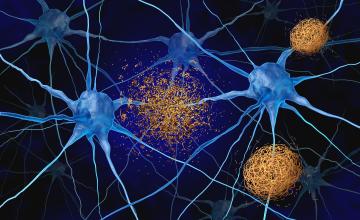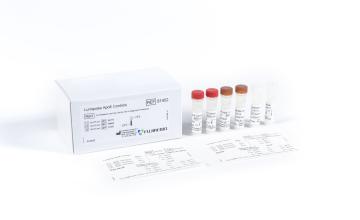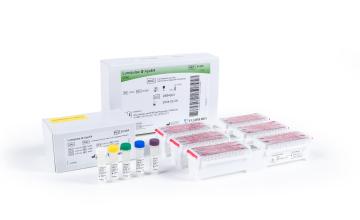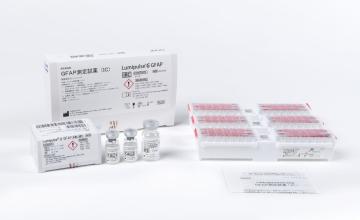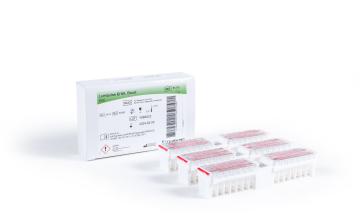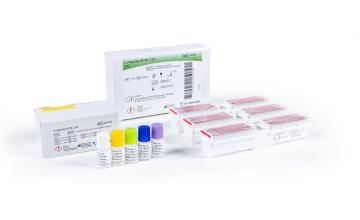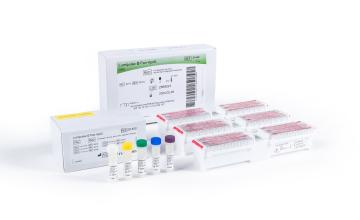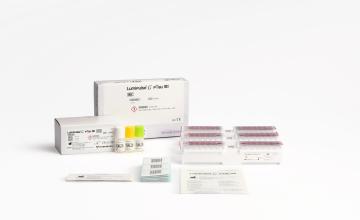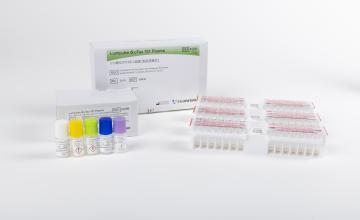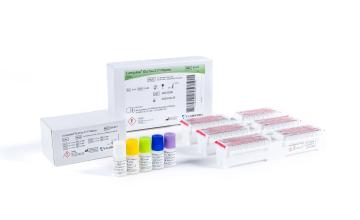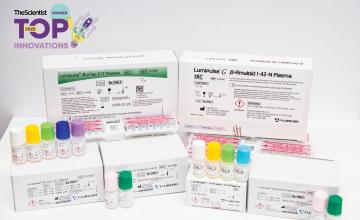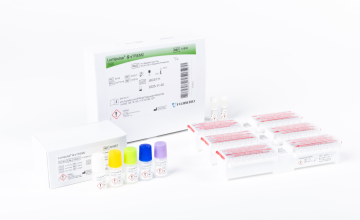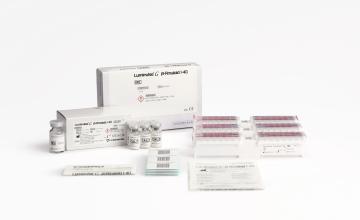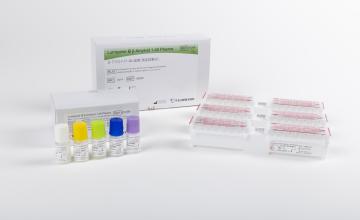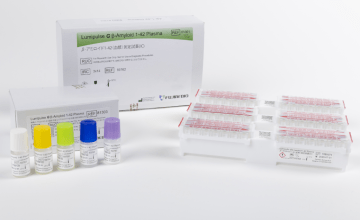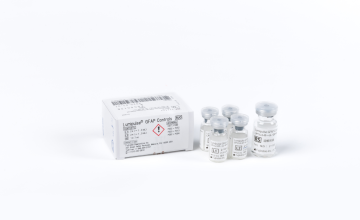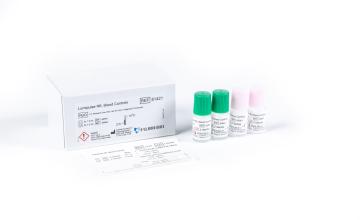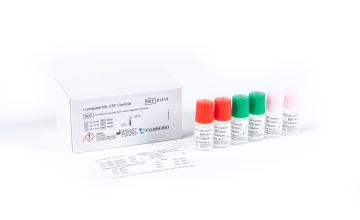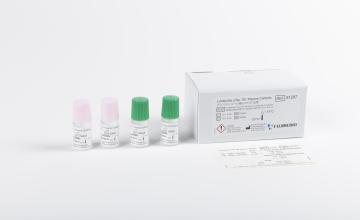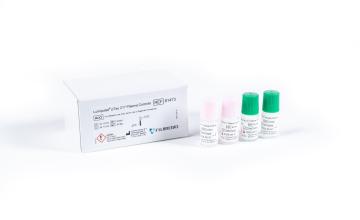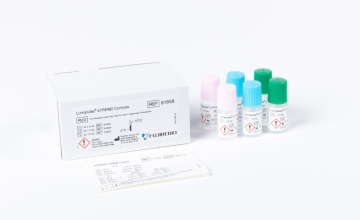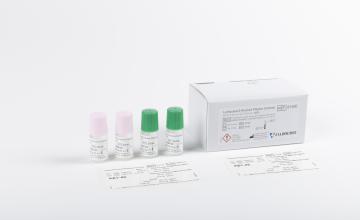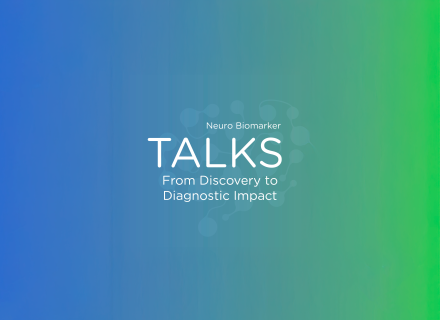On November 3, 1906, the German clinical psychiatrist and neuroanatomist Alois Alzheimer reported “A...
How Can You Diagnose Alzheimer's at the Earliest Stages?
Sep 25, 2025
Diagnosing Alzheimer’s at the earliest stages
An early Alzheimer’s diagnosis has never been more important — or more attainable — than it is today. With two disease-modifying therapies now approved and dozens of clinical trials testing new therapeutics underway, there are more opportunities than ever to slow the progression of Alzheimer’s Disease.
However, unlike some other diseases and conditions (e.g., hypertension or diabetes), recognizing the early signs of Alzheimer’s disease and making an accurate diagnosis remains a clinical challenge for several reasons.
Early signs can be easy to miss
Mild cognitive impairment (MCI) due to Alzheimer’s disease (AD) represents the earliest symptomatic stage of the condition. It is typically marked by short-term memory loss and subtle declines in other cognitive domains such as language, executive function, and visuospatial abilities. These symptoms manifest as difficulties in daily life, including:
• Increasing difficulty with instrumental activities of daily living (IADLs), such as following complex recipes or managing multiple-step tasks1
• Emerging financial vulnerabilities, such as unpaid or late bills, and greater susceptibility to financial scams, may precede a clinical diagnosis and reflect early declines in memory, executive function, and judgment2–4
• Early impairments in spatial navigation. Patients with MCI may become disoriented even on familiar routes, such as driving from work to home, reflecting early deficits in spatial memory and orientation that can emerge before other cognitive symptoms are apparent5,6
• Neuropsychiatric symptoms, including depression, irritability, apathy, anxiety, agitation, and sleep problems, occur in approximately 35% to 85% of individuals with MCI.7
Baseline cognitive assessments
Cognitive testing helps determine the magnitude of a patient’s impairment. One of the most widely used assessments is the 30-point Montreal Cognitive Assessment (MoCA).8,9
• A score of 26/30 or higher is considered normal10
• A score between 18/30 and 25/30 indicates mild cognitive impairment
• A score between 10/30 and 17/30 indicates moderate impairment
• A score below 10/30 indicates severe impairment
These severity ranges are commonly used in clinical settings and have been proposed by MoCA developers, although empirical validation of these subcategories is still needed. 9
While some patients may present only subtle memory and or processing-speed decline, with scores that fall within the “normal” MoCA range, they may still be at risk of progression to MCI.11
Other widely used screening tools include the Mini-Mental State Examination (MMSE) and the Mini-Cog. Both the MMSE and MoCA are widely used in clinical practice, particularly in primary care, and can be completed in about 10 minutes without extensive training. The MMSE is sensitive and reliable for detecting memory and language deficits but has also limitations in identifying executive function impairments. By contrast, the MoCA was developed to improve the detection of MCI and is more sensitive than the MMSE across multiple domains, including memory, visuospatial ability, executive function, language, and orientation.12 The Mini-Cog is shorter and quicker to administer, typically under 5 min, and is freely available, making it practical in time-sensitive clinical settings; however, it provides a briefer assessment across cognitive domains compared to the more comprehensive MoCA and MMSE.12
Ruling out other causes of Alzheimer’s-like symptoms
Before diagnosing MCI due to AD, it is important to consider alternative or coexisting causes of cognitive impairment, many of which are modifiable or reversible. These include:13–16
• Mental health conditions like depression or anxiety
• Vitamin B or hormone deficiencies
• Menopause
• Side effects of existing medications
• Long COVID
• Obstructive sleep apnea
• Strokes, tumors, epilepsy, and other neurological conditions
Reversion from MCI to normal cognition is a well-documented outcome, occurring in approximately 18% of individuals, with higher rates reported in population-based studies. 17 Some reversions may reflect resolution of transient or contributing factors, such as depression, medication effects, or metabolic disturbances.13 If these factors do not fully explain the cognitive symptoms, further testing is needed to confirm an Alzheimer’s disease diagnosis.
Dr. Sharon Cohen, the clinician and director of the Toronto Memory Program, has seen patients who received an incorrect diagnosis because previous doctors were hesitant about going further to test for Alzheimer’s disease when other conditions were present.18 “Physicians often don’t like to pursue the diagnosis of Alzheimer’s, and they will pick other things that might be coexisting, like depression or anxiety,” she told Being Patient. “But that doesn’t mean they don’t have Alzheimer’s.”18
Identifying a treatable underlying cause of cognitive symptoms is a favorable outcome, but diagnostic certainty is essential to guide care. If Alzheimer’s disease remains a possibility after common contributors have been ruled out, the next step is biomarker testing.
Biomarker confirmation
To confirm or definitively rule out Alzheimer’s disease, evidence of amyloid pathology is required. This can be obtained through amyloid PET imaging, cerebrospinal fluid testing, or blood-based biomarker tests with appropriate diagnostic accuracy.20
To confirm amyloid pathology, clinicians can use PET imaging with one of three FDA-approved fluorine-18 radiotracers.21 To confirm tau pathology, one fluorine-18 radiotracer is available as of now, and while it is not used for diagnostic confirmation, it may aid in disease staging.21,22 Alternatively, amyloid pathology can be confirm through cerebrospinal fluid testing by measuring the ratios such as pTau 181/ β-Amyloid 1-42, β-Amyloid 1-42/40, or tTau/β-amyloid 1-42.23 More details on these methods were covered in a previous newsletter, which you can find here.
In cases of indeterminate or discordant findings, clinicians may use multiple biomarker modalities to clarify the diagnosis.
Blood-based biomarker tests are an especially promising option because they are less invasive and more accessible than PET or CSF testing. Reflecting this progress, in May 2025, the Lumipulse® G pTau 217/β-Amyloid 1-42 Plasma Ratio blood test received FDA clearance for use in specialty settings in patients 50 or older presenting with signs of cognitive decline.24
The benefits of early diagnosis
The value of early diagnosis extends beyond access to treatment; it empowers patients and families to make informed decisions about their care and future. Some patients might consider the potential risks and benefits of taking anti-amyloid drugs Leqembi and Kisunla — which may be safer and more effective in the earliest stages.25–27 Others may enroll in clinical trials testing new treatments.
“I want to give people the chance to arrange how they live, to prevent the disasters of dementia, not the end-stage disasters,” Dr. Jason Karlawish, co-director of the Penn Memory Center told Being Patient.28 “I’m talking about the disasters, like the screwed-up checkbook, the mistaken medicines, the poorly treated diabetes, the social isolation, and the failure to build trusting relationships with other people who are going to help you.”
Clinicians should remain vigilant as their patients grow older and use their best clinical judgment to identify early signs of decline, applying cognitive assessments to screen for cognitive decline, and provide biomarker testing when necessary. Ensuring patients receive the correct diagnosis early ensures they have the most options and access to optimal care to manage their symptoms, whether they are caused by dementia.
References:
- Liss JL, Seleri Assunção S, Cummings J, et al. Practical recommendations for timely, accurate diagnosis of symptomatic Alzheimer’s disease (MCI and dementia) in primary care: a review and synthesis. J Intern Med. 2021;290(2):310-334. doi:10.1111/joim.13244
- Gresenz CR, Mitchell JM, Rodriguez B, van der Klaauw W. The Financial Consequences of Undiagnosed Memory Disorders.; 2024. doi:10.59576/sr.1106
- Fenton L, Weissberger GH, Boyle PA, et al. Cognitive and neuroimaging correlates of financial exploitation vulnerability in older adults without dementia: Implications for early detection of Alzheimer’s disease. Neurosci Biobehav Rev. 2022;140:104773. doi:10.1016/j.neubiorev.2022.104773
- Boyle PA, Wang T, Mottola G, et al. Scam susceptibility is associated with a markedly accelerated onset of Alzheimer’s disease dementia. Alzheimer’s & Dementia. 2025;21(3). doi:10.1002/alz.14544
- Newton C, Pope M, Rua C, et al. Entorhinal‐based path integration selectively predicts midlife risk of Alzheimer’s disease. Alzheimer’s & Dementia. 2024;20(4):2779-2793. doi:10.1002/alz.13733
- DeIpolyi AR, Rankin KP, Mucke L, Miller BL, Gorno-Tempini ML. Spatial cognition and the human navigation network in AD and MCI. Neurology. 2007;69(10):986-997. doi:10.1212/01.wnl.0000271376.19515.c6
- Martin E, Velayudhan L. Neuropsychiatric Symptoms in Mild Cognitive Impairment: A Literature Review. Dement Geriatr Cogn Disord. 2020;49(2):146-155. doi:10.1159/000507078
- Julayanont P, Phillips N, Chertkow H, Nasreddine ZS. Montreal Cognitive Assessment (MoCA): Concept and Clinical Review. In: Cognitive Screening Instruments. Springer London; 2013:111-151. doi:10.1007/978-1-4471-2452-8_6
- Jaywant A, Toglia J, Gunning FM, O’Dell MW. Subgroups Defined by the Montreal Cognitive Assessment Differ in Functional Gain During Acute Inpatient Stroke Rehabilitation. Arch Phys Med Rehabil. 2020;101(2):220-226. doi:10.1016/j.apmr.2019.08.474
- Nasreddine ZS, Phillips NA, Bédirian V, et al. The Montreal Cognitive Assessment, MoCA: A Brief Screening Tool For Mild Cognitive Impairment. J Am Geriatr Soc. 2005;53(4):695-699. doi:10.1111/j.1532-5415.2005.53221.x
- Li W, Yue L, Xiao S. Subjective cognitive decline is associated with a higher risk of objective cognitive decline: A cross-sectional and longitudinal study. Front Psychiatry. 2022;13. doi:10.3389/fpsyt.2022.950270
- Porsteinsson AP, Isaacson RS, Knox S, Sabbagh MN, Rubino I. Diagnosis of Early Alzheimer’s Disease: Clinical Practice in 2021. J Prev Alzheimers Dis. 2021;8(3):371-386. doi:10.14283/jpad.2021.23
- Anand S, Schoo C. Mild Cognitive Impairment.; 2025.
- How Is Alzheimer’s Disease Diagnosed? National Institute of Aging. Accessed July 1, 2025. https://www.nia.nih.gov/health/alzheimers-symptoms-and-diagnosis/how-alzheimers-disease-diagnosed
- Patel A, Chong DJ. Obstructive Sleep Apnea. Clin Geriatr Med. 2021;37(3):457-467. doi:10.1016/j.cger.2021.04.007
- Zhao S, Martin EM, Reuken PA, et al. Long COVID is associated with severe cognitive slowing: a multicentre cross-sectional study. EClinicalMedicine. 2024;68:102434. doi:10.1016/j.eclinm.2024.102434
- Canevelli M, Grande G, Lacorte E, et al. Spontaneous Reversion of Mild Cognitive Impairment to Normal Cognition: A Systematic Review of Literature and Meta-Analysis. J Am Med Dir Assoc. 2016;17(10):943-948. doi:10.1016/j.jamda.2016.06.020
- Spichak S. Misdiagnosed: Why Is a Dementia Diagnosis So Hard to Get Right? Being Patient. 2023. Accessed July 1, 2025. https://www.beingpatient.com/alzheimers-dementia-inaccurate-diagnosis/
- Bailey C, Dooley J, McCabe R. ‘How do they want to know?’ Doctors’ perspectives on making and communicating a diagnosis of dementia. Dementia. 2019;18(7-8):3004-3022. doi:10.1177/1471301218763904
- Schindler SE, Galasko D, Pereira AC, et al. Acceptable performance of blood biomarker tests of amyloid pathology — recommendations from the Global CEO Initiative on Alzheimer’s Disease. Nat Rev Neurol. 2024;20(7):426-439. doi:10.1038/s41582-024-00977-5
- Rabinovici GD, Knopman DS, Arbizu J, et al. Updated appropriate use criteria for amyloid and tau PET: A report from the Alzheimer’s Association and Society for Nuclear Medicine and Molecular Imaging Workgroup. Alzheimer’s & Dementia. 2025;21(1). doi:10.1002/alz.14338
- Vermeiren MR, Calandri IL, van der Flier WM, van de Giessen E, Ossenkoppele R. Survey among experts on the future role of tau‐PET in clinical practice and trials. Alzheimer’s & Dementia: Diagnosis, Assessment & Disease Monitoring. 2024;16(4). doi:10.1002/dad2.70033
- Barthélemy NR, Salvadó G, Schindler SE, et al. Highly accurate blood test for Alzheimer’s disease is similar or superior to clinical cerebrospinal fluid tests. Nat Med. 2024;30(4):1085-1095. doi:10.1038/s41591-024-02869-z
- Fujirebio Receives Marketing Clearance for Lumipulse® G pTau 217/β-Amyloid 1-42 Plasma Ratio In-Vitro Diagnostic Test As An Aid To Identify Patients With Amyloid Pathology Associated With Alzheimer’s Disease. Fujirebio. 2025. Accessed July 1, 2025. https://www.fujirebio.com/en-us/news-events/fujirebio-receives-marketing-clearance-for-lumipulser-g-ptau-217bamyloid-142-plasma-0
- van Dyck CH, Swanson CJ, Aisen P, et al. Lecanemab in Early Alzheimer’s Disease. New England Journal of Medicine. 2023;388(1):9-21. doi:10.1056/NEJMoa2212948
- Sims JR, Zimmer JA, Evans CD, et al. Donanemab in Early Symptomatic Alzheimer Disease. JAMA. 2023;330(6):512. doi:10.1001/jama.2023.13239
- Paczynski M, Hofmann A, Posey Z, et al. Lecanemab Treatment in a Specialty Memory Clinic. JAMA Neurol. Published online May 12, 2025. doi:10.1001/jamaneurol.2025.1232
- Chan N. Detecting and Treating Alzheimer’s Before Symptoms Set In, With Dr. Jason Karlawish. Being Patient. 2021. Accessed July 1, 2025. https://www.beingpatient.com/early-detection-alzheimers-jason-karlawish/




